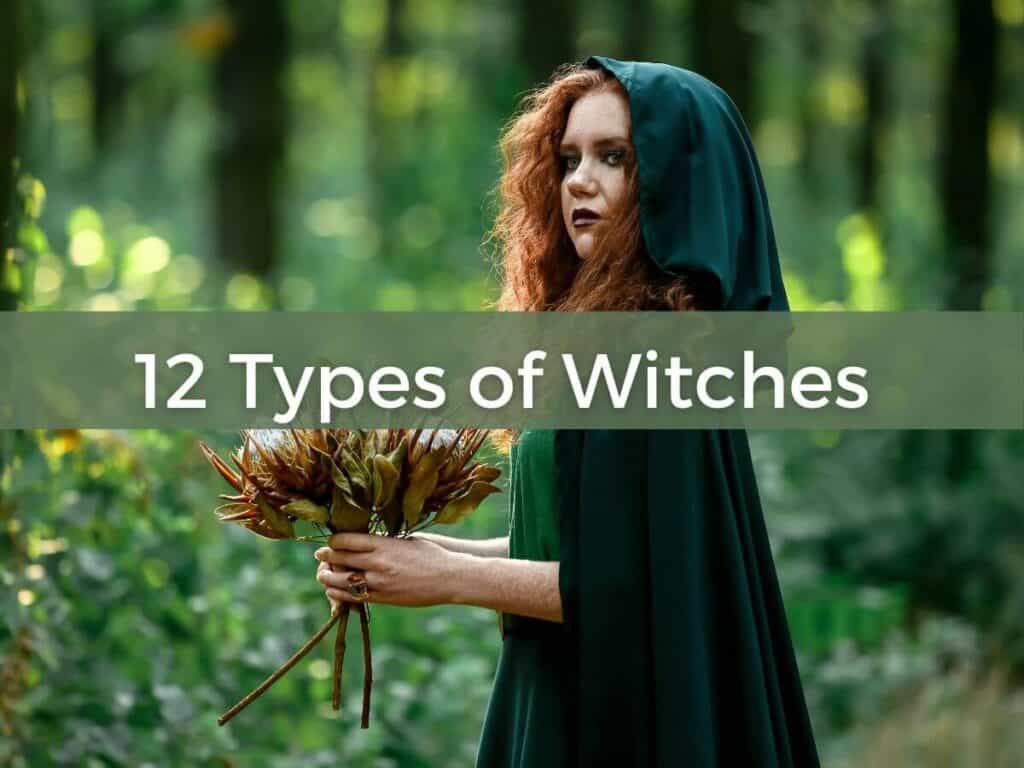If you look online, you’ll find many different types of witches referenced. Kitchen witches, hedge witches, star witches, sea witches, forest witches, and of course, green witches, will be among them.
It’s worth noting that there are no strict requirements to call yourself by any of these terms. It’s really all about what you feel most identifies your personal practices. For me, green witch fits best, but I also could claim forest witch, kitchen witch, nature witch, hedge witch, and so on because my practice encompasses all these things.
But it’s also informed by shamanic practices, folk magic and traditions, animism, Reiki practice, and other holistic modalities that I have studied over my decades of being a witch. So I could also claim to be an eclectic witch.
What you call yourself is really up to you. What do you feel drawn to? What makes up the core of your practices? All types of witchery have similarities, so these labels are really only for the convenience of the human mind.
Our brains seem most comfortable being able to label things.
In this post, we’ll look at 12 different types of witches.
Types of Witches
The Traditional Witch
This type of witch is drawn to the historical aspects of the craft. They embrace the things that the ancestors did. The tools they used. Using that ancient wisdom in modern life.
Their practice includes:
- Ancient rituals and traditions
- Reverence for nature
- Aligning with the cycles of the moon and seasons
- Folklore, myths and cultural traditions
The traditional witches are guardians and keepers of our collective ancestral wisdom and ways.
The Fairy Witch
This is a witch that taps into the mystical realms of the fairies, sprites, and other nature spirits.
Their practice includes deep reverence for the natural world and connection with the unseen world through more than human beings and ethereal and natural elements.
The Crystal Witch
This witch is one who works with gemstones to harness their unique vibrations into her everyday life and spell work. Often, they will have many crystals in their homes and use them for meditation, spell work, and divination.

Moon or Lunar Witch
These witches embrace the ancient wisdom of the cycles of the moon, knowing that each phase brings its own special magick to rituals, manifesting, divination, spell work, and daily life. Just as our ancestors did, they use the moon as a timer or guide for magickal and practical aspects of life.
The Chaos Witch
This is a wonderfully eclectic path. This witch moves back and forth from the edges of the wild unknown to the mundane. Using chaos as a wellspring of potent energy, she creates magick by following her own path. She’s not afraid to experiment and set aside tradition. She allows her intuition to guide her in impulsive magick in the moment, using whatever energies are available to her.
The Green Witch
This witch is immersed in nature and simplicity. She has a deep reverence for the natural world and honors the seasons, the cycles of the moon, and the earth’s energies. Working with plants, herbs, rocks, trees, animals, and sometimes unseen beings, to weave spells with daily life. She creates harmony, bringing ancient wisdom to her modern life. The green witch is the keeper of the oldest traditions of witchcraft.
Kitchen Witch
The culinary arts and the heart of the home are the roots of the kitchen witch. There’s a reverence for the kitchen as a place of magick and alchemy, along with alignment with the seasons.
The kitchen witch finds joy and her unique magick in the crafting of food and in the tools used to do it. For her, recipes are spells. Food connects us all, creating a bond between the now and our ancestors as well as those we share our home and hearth with today. When you begin to see keeping your home and cooking or baking as magickal practices instead of just chores, there’s a special magick that happens. These witches are the guardians of the traditions of the home.

The Hedge Witch
These witches stand at the crossroads of the mystical and the mundane. The hedge is the boundary between the physical world we live in and the spirit world, or the unseen world. This witch is going beyond the veil to connect with plant allies, spirits, and unseen beings that reside in those liminal spaces. They hear the magick in the whispers of the wind as they forge relationships with those unseen forces.
The Solitary Witch
Any type of witch can be a solitary practitioner. This is one who prefers to explore her craft independently. She embraces and welcomes the solitude of this journey. Her path is deeply personal and is often connected to her own self-discovery, transformation, and growth.
This is a witch who rejects the structures of working in groups in favor of crafting a practice at their own pace, finding the sacred for themselves.
The Eclectic Witch
This witch embraces elements from various traditions and cultures. Combining them into a unique-to-her practice. Central to this type of practitioner is the belief that witchcraft is a deeply personal and ever-evolving journey. Having the freedom to explore other ways of doing things, experimenting with different traditions, and then integrating those things into her practice is all part of this witch’s path.
An eclectic witch finds beauty in the bringing together of different magical traditions. Merging them to create a uniquely personal and effective path. This approach invites both ancient rituals and modern practices and invites the exploration of new techniques.
With an open heart and a willingness to learn from various sources, the Eclectic Witch embraces the idea that magick is a limitless and boundless force, ready to be harnessed through this blended, eclectic wisdom.
The Wiccan Witch
This practitioner weaves together the sacred spirituality of nature and rituals rooted in the pagan practices of Wicca. This type of witch often sees witchcraft/Wicca as a religion, whereas other types of witches regard their path as a spiritual practice.
In this tradition, the god and goddess are venerated. This path also draws inspiration from the cycles of the moon, the Wheel of the Year, and the four elements.
Rituals often include casting a circle, invocations such as calling the watchtowers or quarters, and spell work. This can be a solitary path or one that is done with a coven.
Many other types of witches will draw inspiration from this tradition and incorporate elements of Wicca into their personal practices.

The Elemental Witch
The elemental witch is attuned to the energies of earth, air, fire, and water. This path draws inspiration from the core elements that shape all the universe. She acknowledges that there’s inherent power in each breeze, flame, water droplet, or stone. The spirits of the elements are often invoked to amplify spell work, aligning to the unique properties and symbolism of each element. Communing with the spirits of earth, sylphs of air, salamanders of fire, and undines of water is part of this practice.
Types of Witches – Summary
While this isn’t a complete list of all the different types of witches, it gives you a few categories to explore if you’re new to witchery. If you’ve been practicing for a while, then I’d bet you probably have elements of all these types of witchery incorporated into your personal practice, just as I do.
There’s no one way to be a witch. There is no one-size-fits-all solution.
It’s not important to have a label. Our human brains like them, which is what has given rise to them.
Each witch is unique. A single facet of the larger mystical, magickal web of witchcraft.
Your experiences, influences, and revelations from walking your personal path will all combine into a perfect-for-you journey. Trust your journey and allow it to unfold, believing that you are getting exactly what you need.
Blessed be.
You might like these too:
The Esbats & Sabbats of 2024 – A Witch’s Sacred Year
Journey Through the Wheel of the Year: The Sabbats & Themes



